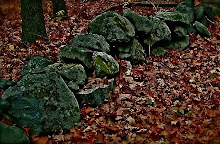Anatomy and Physiology 101. I held a human skull in my hands. It once cradled a living brain, anchored muscles that smiled and frowned, chewed countless meals. Now an anonymous teaching tool, this skull belonged to a real person who once walked this earth.
I was in a bad place the year I took A&P 101 at Salem State College. I had just learned that the baby I carried within me was dead. The sixth dead baby. My concept of a loving God was shattered—how could he love me, hitting me over and over with dead babies? He seemed more like a nasty bully who gives random electric shocks to caged rats, or pulls the wings off flies to watch them suffer. Life was a horror with a boss like that in charge. I wanted off the planet.
It was ironic that I was studying bones. My faith in God was stripped down to its skeleton. There is a creator. Jesus really did come and die and rise from the dead. Period.
I was slowly collecting night classes for a possible nursing degree someday—in between being the best mom I could to my two-year-old son. At 26, I had become an unwilling expert on grief. You run. You run as fast as you can, you work with all your strength, you study with all your mind, anything to keep the darkness at arm’s length, because if you let it swallow you, you might not find your way out. So taking a challenging class was a relief, a way to run.
I had learned that if you can just keep running, after a while the intensity of grief will slowly soften, the way a deep gouge in the earth will lose its hard edges after years of erosion and layers of fallen leaves. Yes, it is still there. But somehow it will begin to fit into the landscape of your life, you get used to it being there, and its power to hurt is blunted. That probably goes against all the advice in the psychology books, but it works. What are you supposed to do, especially when you have a child who needs you? Sit around and cry all the time? Go to bed and don’t come out until it’s over? You run.
So there I sat in the classroom with a human skull in my hand, weeping inside for my dead baby and raging against God.
The dark ivory skull was etched with delicate zigzag lines where the various bones met. I learned the names of those bones: orbital, frontal, parietal, temporal, occipital, mandible, maxilla. Studying the skull in my hand, I noticed little holes piercing it to allow nerves and blood vessels to pass through. And then it hit me: there were two tiny holes, one under the corner of each eye, for tears.
How did they get there? When you think of the details in a human body, how a single cell can generate such a complex being, a complex being that actually has tiny holes carved through its skull so its tears can drain into its nose, it is hard not to believe in a Creator. A Creator who knew that we would cry.
Odd, that the bones of a man or woman I will never know became my first step on the way back to God.
skip to main |
skip to sidebar

About Me

- Merril
- Life has been an adventure, filled with wonder, punctuated with sorrow, always new. Raising four children has truly been the greatest accomplishment of my life--I know that sounds weird, but from this autumn perspective, I see that it is true.
No comments:
Post a Comment